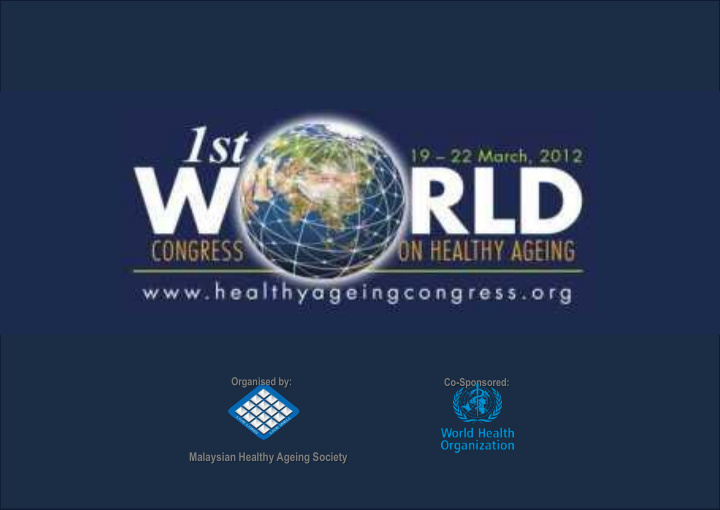



Organised by: Co-Sponsored: Malaysian Healthy Ageing Society
Social participation for healthy ageing Evidence and experience from the Older People’s Associations in Asia HelpAge International network 19 March 2012, Kuala Lumpur Eduardo Klien Regional Representative, HelpAge International East Asia and Pacific Regional Development Centre eduardo@helpageasia.org
Forum speakers 1. Ms Susana Concordo Harding, International Longevity Centre, Singapore 2. Dr Prakash Tyagi, GRAVIS, India 3. Meredith Wyse, HelpAge International, Thailand 4. Eduardo Klien, HelpAge International, Thailand
HelpAge international network • Our work in over 75 countries is strengthened through our global network of like-minded organisations – the only one of its kind in the world. • Over 90 organisations in more than 60 countries are affiliated to HelpAge International. • They are in eight different regions; East, West and Central Africa, East Asia and Pacific, South Africa, Latin America, South Asia, Caribbean, European, Eastern Europe and Central Asia, North America and the Middle East.
The determinants of Active Ageing Source: Active Ageing: A Policy Framework, World Health Organization
Older People’s Associations 1. Multifunctional community based organisations of older people working to improve the wellbeing of older people, their families and communities 2. Promote mutual support among older people within their own community, reducing the risk of isolation and vulnerability 3. In Asia OPAs improve food or income security, manage homecare schemes, deliver health education, and expand community disaster risk reduction 4. Many governments in Asia support the development and expansion of OPAs by providing training, guidelines or financial assistance
Livelihoods Self-help Governance & Food participation security Rights & Rural Entitlements development Older people's DRR & associations Climate Home care (OPAs) Change Social & Healthy Culture Ageing Curative Mental HIV Health Health & care AIDS
Older People’s Associations • Mainly in rural areas, but model works well in urban areas as well • Target low income community and members • Model in process of ongoing development • The idea of OPAs is not new – building self sustaining, inclusive and empowered OPAs is
Where are OPAs in Asia? • Bangladesh Older citizens monitoring group (OCM) • Cambodia Older people’s association (OPA) • China Japan Older people’s association (OPA) China • India Self-help group (SHG) • Indonesia Nepal Bhutan Pakistan Older people’s association (OPA) • Korea Bangladesh India Older people’s community (OPC) Myanmar Cambodia • Lao PDR Older people’s group (OPG) Thailand Philippines • Myanmar Vietnam Laos Older people self-help group (OPSHG) • Nepal Sri Lanka Older people’s association (OPA) • Philippines Malaysia Older people’s organisations (OPO) • Sri Lanka Older people’s association (OPA) Indonesia • Vietnam Intergenerational self-help club (ISHC)
The OPA model OPAs are trained to increase its capacity to manage its activities and to generate its own income: OPAs income Small IGA Income Local Fund Credit /saving Membership activity raising (interest) fee sources Capacity Healthy living, Livelihood Social and building & healthcare (self cultural managed) Usage of income Homecare Self-help Rights and Awareness & and self-help Fund Entitlement Advocacy
Recommend
More recommend